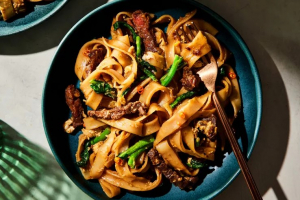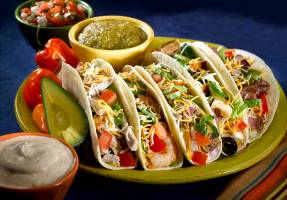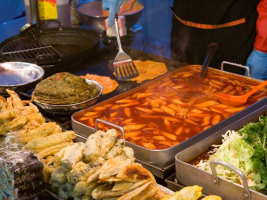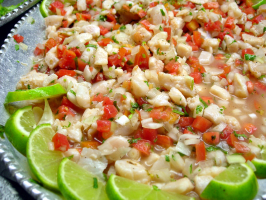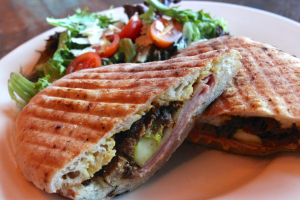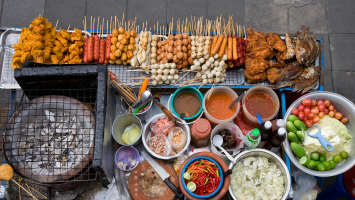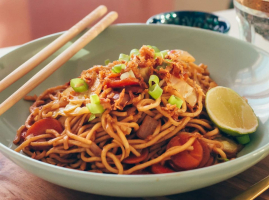Top 10 Best Thai Street Food in Bangkok
Embark on a culinary adventure and explore the vibrant street food scene of Bangkok. Our team of experts at Toplist has handpicked the best Thai street food ... read more...options in the city, offering a delicious experience that highlights the diverse range of flavors available. Get ready to tantalize your taste buds and discover the best that this stunning city has to offer.
-
Pad Thai is not only a delicious dish but also an integral part of Thai culinary heritage. Its origins can be traced back to the 1930s when Thailand was experiencing rapid social and economic changes. The country's leaders, concerned about a potential rice shortage, sought to promote the consumption of noodles as an alternative staple food.
During World War II, Thailand faced a shortage of rice due to disruptions in the global rice trade. The government launched a campaign called "Noodle is Your Lunch" to encourage people to consume noodles instead of rice. As a result, various noodle dishes gained popularity across the country, and Pad Thai emerged as a favored choice among the masses.
Pad Thai's recipe was created by blending different influences like Chinese stir-fry techniques and Thai flavors. The dish typically consists of stir-fried rice noodles, shrimp, tofu, eggs, bean sprouts, green onions, and crushed peanuts. The real magic lies in the tangy and flavorful sauce made from tamarind paste, fish sauce, sugar, and lime juice. This combination of ingredients creates a tantalizing balance of sweet, sour, and savory flavors.
Over time, Pad Thai has become not just a beloved street food but also an iconic representation of Thai cuisine. It can be found in virtually every Thai restaurant around the world, gaining popularity among both locals and tourists alike.
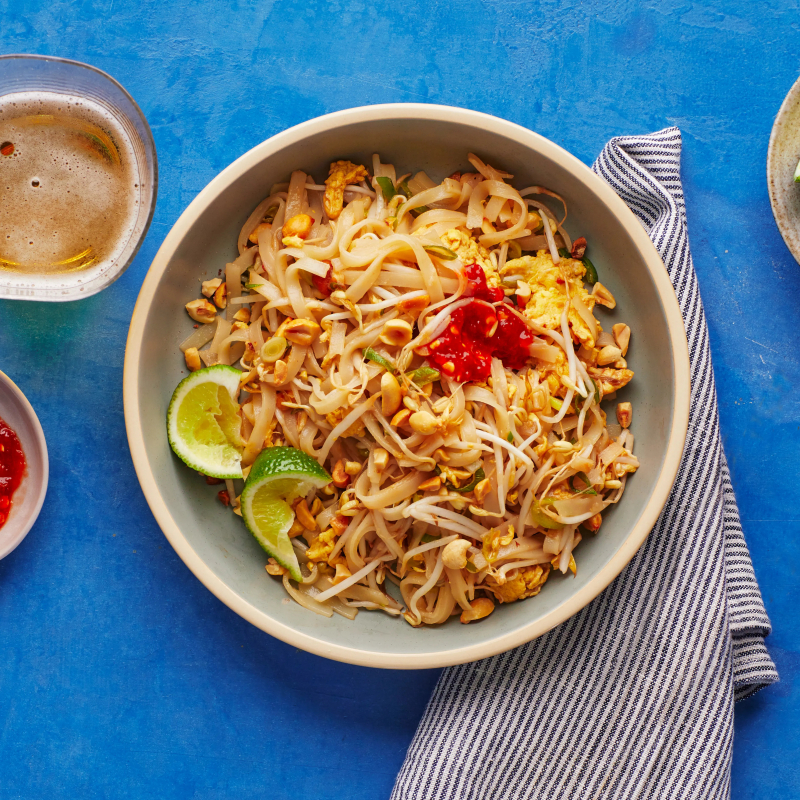
bonappetit.com 
plantbasedonabudget.com -
Tom Yum Goong is a quintessential Thai soup that showcases the delightful combination of spicy, sour, and aromatic flavors that make Thai cuisine unique and vibrant. This iconic dish is a must-try for those seeking a tantalizing sensory experience.
At the heart of Tom Yum Goong is the harmonious blend of lemongrass, chili, and lime. These ingredients infuse the soup with a refreshing and tangy flavor profile that awakens the taste buds. The spiciness of the chilis adds a fiery kick, while the sourness from lime juice provides a refreshing and tangy note. The combination of these flavors creates a symphony of taste that is both energizing and comforting.
The star ingredient of Tom Yum Goong is the succulent shrimp. The deep flavors of the soup infuse the shrimp, adding a savory and umami-rich element to every bite. The shrimp perfectly complements the vibrant flavors of the soup and adds a delightful textural contrast.
In addition to shrimp, Tom Yum Goong often includes other ingredients such as mushrooms, tomatoes, and fragrant herbs like cilantro and kaffir lime leaves. These ingredients enhance the complexity of the soup, providing additional layers of flavor and aroma.
Tom Yum Goong is not only beloved for its taste but also for its health benefits. The soup is often touted for its immune-boosting properties, thanks to the combination of fresh herbs and spices. Lemongrass, in particular, is known for its anti-inflammatory and detoxifying properties.
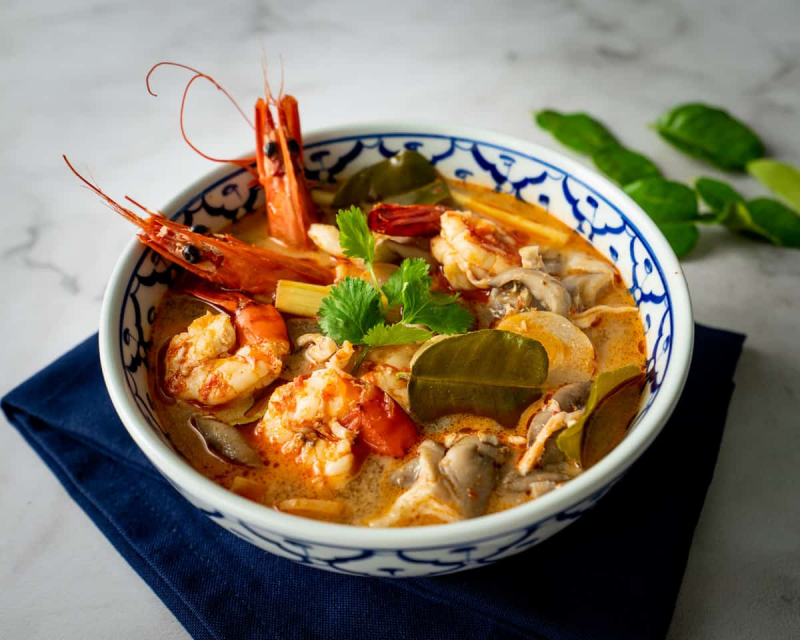
hot-thai-kitchen.com 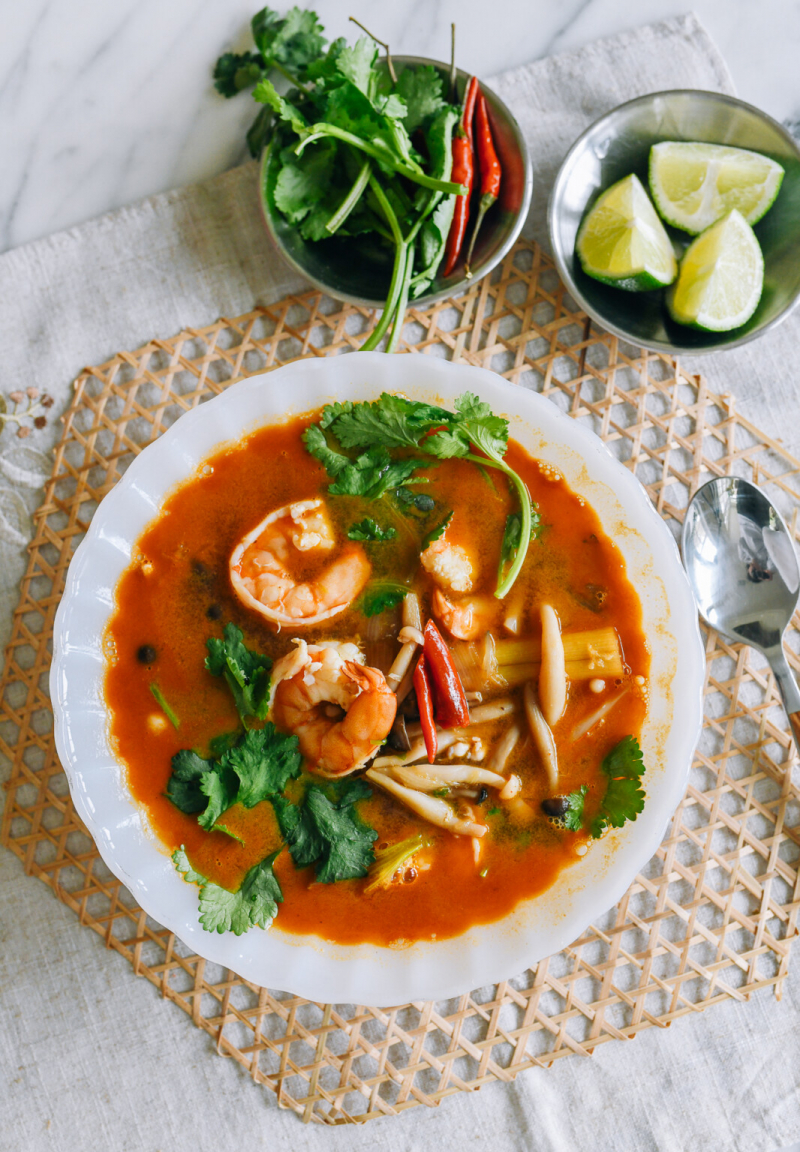
thewoksoflife.com -
Som Tam, also known as green papaya salad, is a vibrant and aromatic dish that is sure to delight your taste buds with its unique combination of flavors. This spicy and refreshing Thai staple is a must-try for those seeking a burst of bold and zesty tastes.
Som Tam is a dish that's centered around shredded green papaya, which serves as a crisp and refreshing base. The papaya is combined with tomatoes, chilis, and peanuts, resulting in a mix of various textures and flavors. The tangy lime juice adds a refreshing element, while the fish sauce provides a savory depth that balances out the spiciness of the chilis.
What makes Som Tam truly unique is the way it captures the essence of Thai cuisine. It is a perfect representation of the harmonious balance of flavors that Thai food is renowned for. The combination of sweet, sour, spicy, and salty flavors creates a symphony of tastes that dance on your palate.
The preparation of Som Tam involves pounding the ingredients in a mortar and pestle to release their flavors and combine them into a cohesive mixture. This process not only ensures that the flavors meld together perfectly but also enhances the aromatic qualities of the dish.
In Thailand, Som Tam is often enjoyed as a refreshing snack or appetizer, especially during hot summer days. It is a street food favorite that can be found at bustling markets and food stalls across the country. The vibrant colors and enticing aromas of Som Tam make it an irresistible choice for locals and tourists alike.
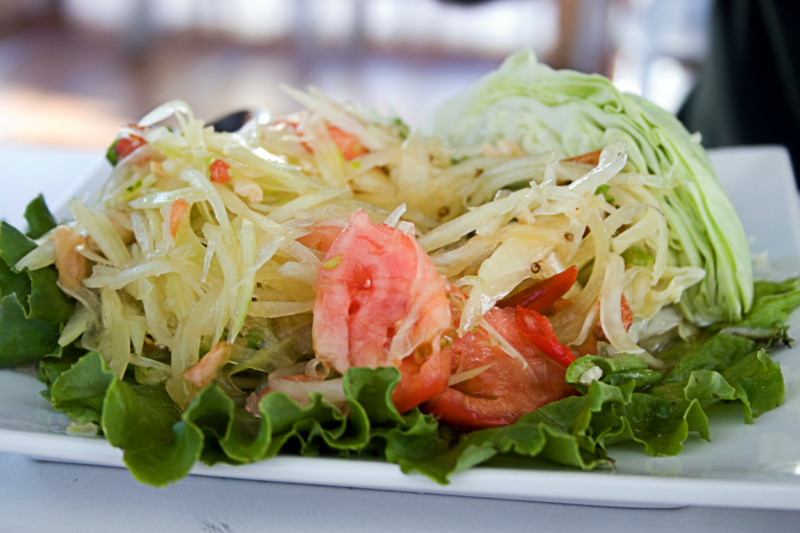
flickr.com 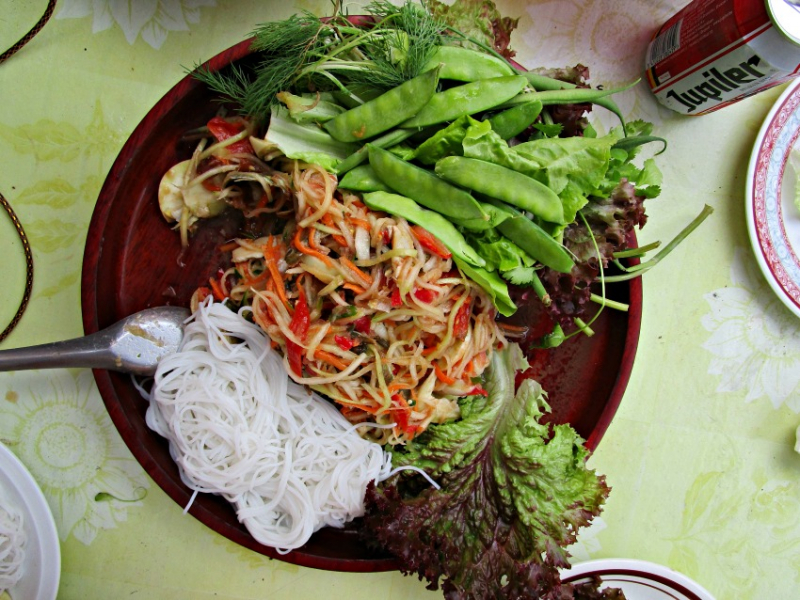
flickr.com -
Transport yourself to the bustling streets of Thailand with the tantalizing flavors of Moo Ping, a beloved street food favorite. Moo Ping consists of juicy and flavorful grilled pork skewers that are marinated to perfection and cooked to tender, smoky deliciousness.
The aroma alone is enough to make your mouth water as the skewers sizzle on the grill, filling the air with the enticing scents of garlic, cilantro, and a symphony of Thai spices. The marinade for Moo Ping typically includes a delightful combination of ingredients such as garlic, pepper, oyster sauce, fish sauce, soy sauce, and a touch of sugar. This blend creates a harmony of sweet, spicy, and savory flavors that infuse the pork with an irresistible taste.
One of the best ways to enjoy Moo Ping is by pairing it with sticky rice, a traditional accompaniment in Thailand. The sticky rice perfectly complements the tender and flavorful pork, creating a delightful combination of textures and tastes. It's a match made in culinary heaven.
Moo Ping is often prepared by skilled street food vendors who have perfected their grilling techniques over time. Traditionally, these skewers are cooked over charcoal grills, which impart a smoky and charred flavor that enhances the overall experience. The result is succulent and juicy pork that melts in your mouth with each bite.
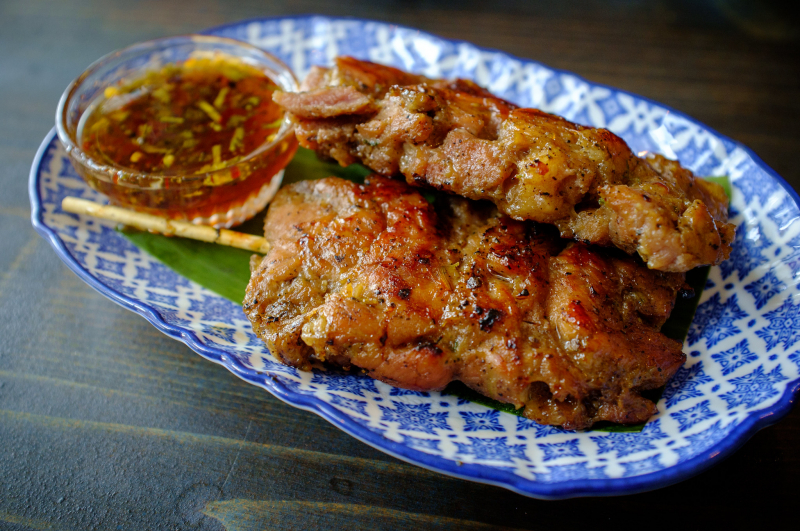
flickr.com 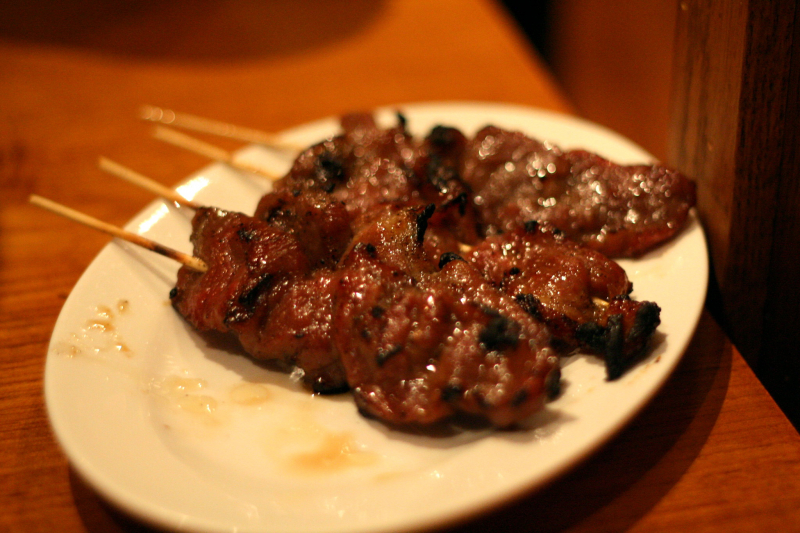
flickr.com -
Get ready to delight in the flavors of Kai Jeow, a mouthwatering Thai-style omelet that will satisfy even the most dedicated egg lovers. This beloved dish is a perfect combination of simplicity and deliciousness, showcasing the art of Thai cuisine.
Made with just a few ingredients, including eggs, onions, and herbs, Kai Jeow is a classic street food staple in Thailand. The eggs are beaten until light and fluffy, then mixed with thinly sliced onions and an array of aromatic herbs. These herbs can vary based on personal preference but commonly include cilantro, Thai basil, and green onions. This blend of ingredients creates a harmonious balance of flavors that is both comforting and enticing.
The uniqueness of Kai Jeow lies in the method used to cook it, which gives it a characteristic texture. Typically, the omelette is prepared in a hot skillet or wok, where the mix of beaten eggs is poured and allowed to spread and cook evenly. This results in a light and fluffy omelette with a slightly crispy outer edge and a tender middle.
Kai Jeow is often served with a side of steamed white rice, transforming it into a satisfying and complete meal. The combination of the fluffy omelet and the fragrant rice creates a perfect balance of textures and flavors. The simplicity of the dish allows the natural flavors of the eggs and herbs to shine, making it a versatile choice for any time of the day.

foodandwine.com 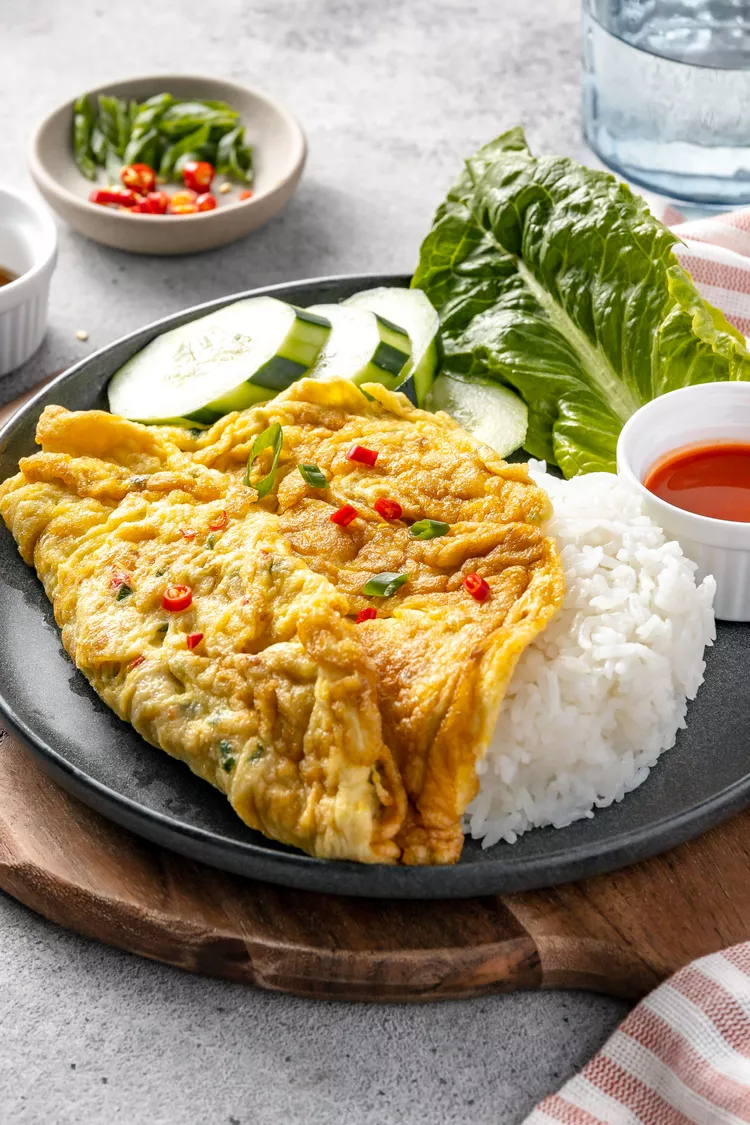
simplyrecipes.com -
Savor the rich aroma and delightful flavors of Khao Pad, a popular Thai-style fried rice that is sure to satisfy your cravings. This mouthwatering dish is a staple in Thai cuisine and offers a perfect blend of flavors, making it a favorite among both locals and tourists.
Khao Pad can be made with a variety of ingredients, providing countless possibilities for customization. Common versions of Khao Pad include shrimp, chicken, or vegetables, but you can also find variations with pork, beef, or a combination of meats. It's the perfect dish to suit your personal preferences and dietary choices.
The key to a delicious Khao Pad lies in the delicate balance of flavors and textures. The rice is stir-fried with a medley of ingredients such as garlic, onions, bell peppers, carrots, and green onions, creating a vibrant and colorful dish. The addition of soy sauce and oyster sauce adds a savory depth to the dish, while Thai seasonings like fish sauce, chili, and lime juice provide a subtle yet distinctive kick.
One of the signature elements of Khao Pad is the topping of a fried egg. The runny yolk adds a creamy richness to the dish and creates a luscious sauce when mixed with the rice. It's a delightful finishing touch that elevates the overall experience and adds an extra layer of indulgence.
Serving Khao Pad with fresh cucumber slices and a wedge of lime is a common practice in Thailand. The crispness of the cucumber provides a refreshing contrast to the savory flavors of the fried rice, while a squeeze of lime juice adds a bright and tangy note that brings out the dish's vibrant flavors.
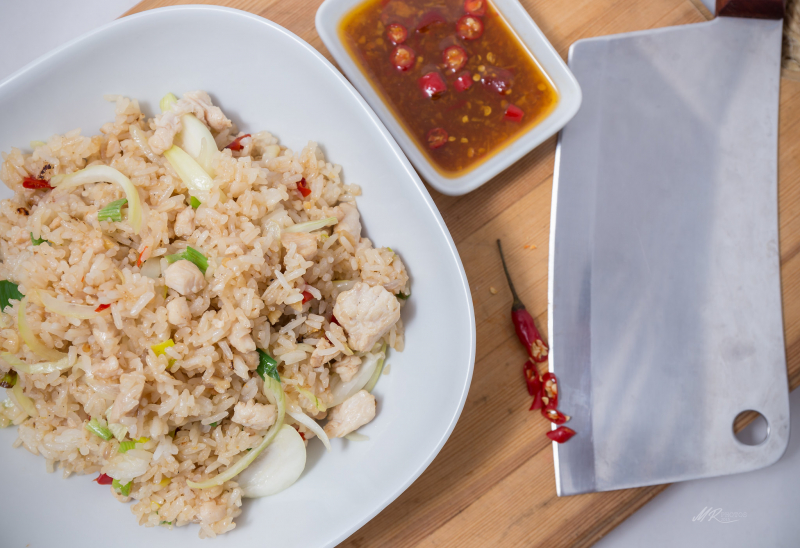
flickr.com 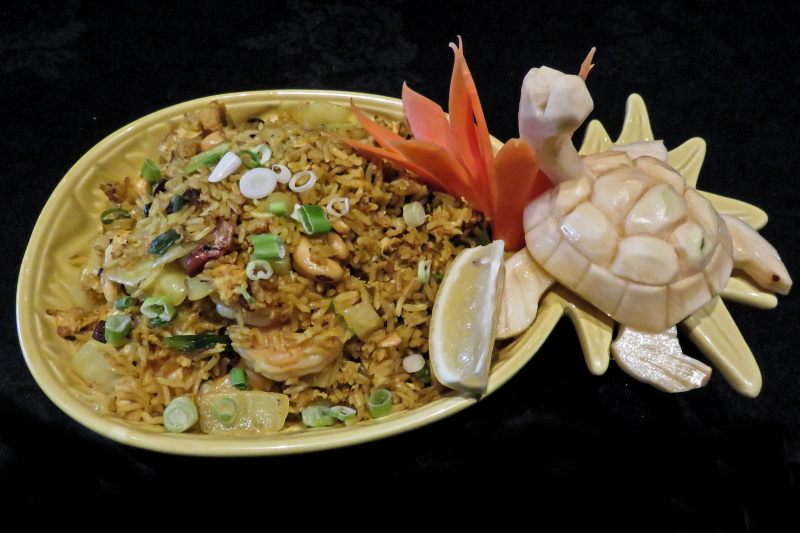
flickr.com -
Get ready to indulge in the irresistible flavors of Gai Tod, a beloved street food in Thailand. This dish features crispy fried chicken that is marinated in a unique blend of aromatic Thai spices, making it an instant hit among locals and visitors alike.
The preparation of Gai Tod begins with marinating bite-sized pieces of chicken in a blend of herbs and spices, including garlic, coriander, and lemongrass. The marinade creates a depth of flavor that infuses the chicken with a tantalizing aroma and savory taste. Once the chicken has been marinated for a few hours, it is coated in a mixture of flour and cornstarch, and seasoned with additional spices to create a crispy outer coating.
The chicken is then deep-fried until golden brown and crispy, creating a satisfying crunch that is sure to please. The result is a dish that is crisp on the outside and tender on the inside, with a perfectly seasoned flavor that everyone will love.
Gai Tod is typically served with a side of sweet chili sauce for dipping. The tangy sweetness of the sauce pairs perfectly with the savory flavor of the chicken, creating a delightful balance of flavors. It's the perfect combination of crispy, spicy, and sweet.
One of the best things about Gai Tod is how versatile it is. It can be enjoyed as a snack or appetizer, or as a main dish alongside rice and vegetables. And because it's so easy to make, it's a dish that you can recreate at home and impress your family and friends with.

asianinspirations.com.au 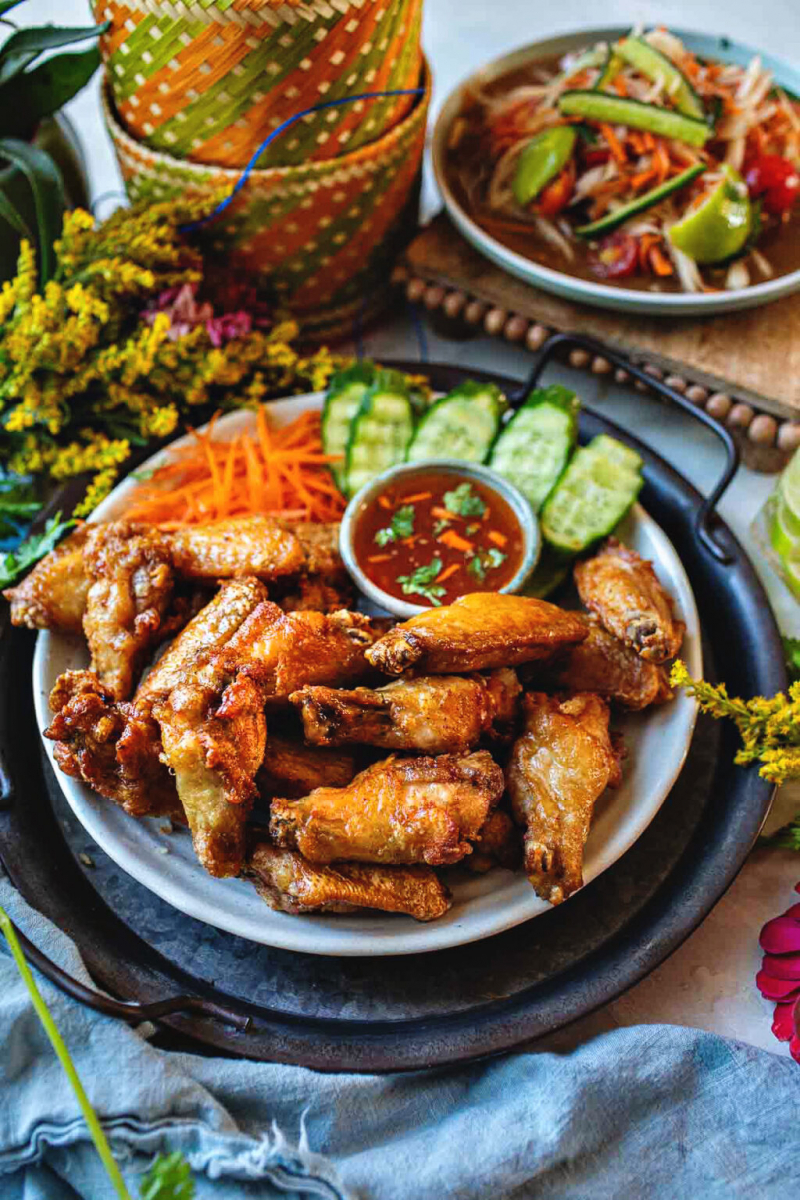
simplysuwanee.com -
For a true taste of Thai culinary heritage, look no further than Khanom Jeen Nam Ya. This beloved street food is a delicious and hearty meal that showcases the rich flavors and aromas of southern Thai cuisine. It's a delightful combination of fresh rice noodles, tender fish or seafood, and a fragrant curry sauce, creating a dish that is both comforting and satisfying.
Khanom Jeen Nam Ya is typically served with a variety of herbs, vegetables, and condiments. The dish is usually accompanied by fresh bean sprouts, green onions, sliced cabbage, and crispy fried garlic. The toppings not only add flavor and texture to the dish but also create a colorful and vibrant plate that is visually pleasing.
The curry sauce used in Khanom Jeen Nam Ya is what sets it apart from other Thai dishes. It's made with a blend of fresh herbs and spices, including lemongrass, galangal, kaffir lime leaves, and turmeric. These ingredients are then combined with coconut milk and fish or seafood to create a savory and aromatic curry that infuses the rice noodles with delicious flavors.
Khanom Jeen Nam Ya is often enjoyed in a communal setting, making it the perfect dish for sharing with family and friends. Its origins can be traced back to southern Thailand, where it has been a beloved dish for generations. Nowadays, it can be found in Thai restaurants across the globe as a popular and comforting representation of the country's rich culinary heritage.
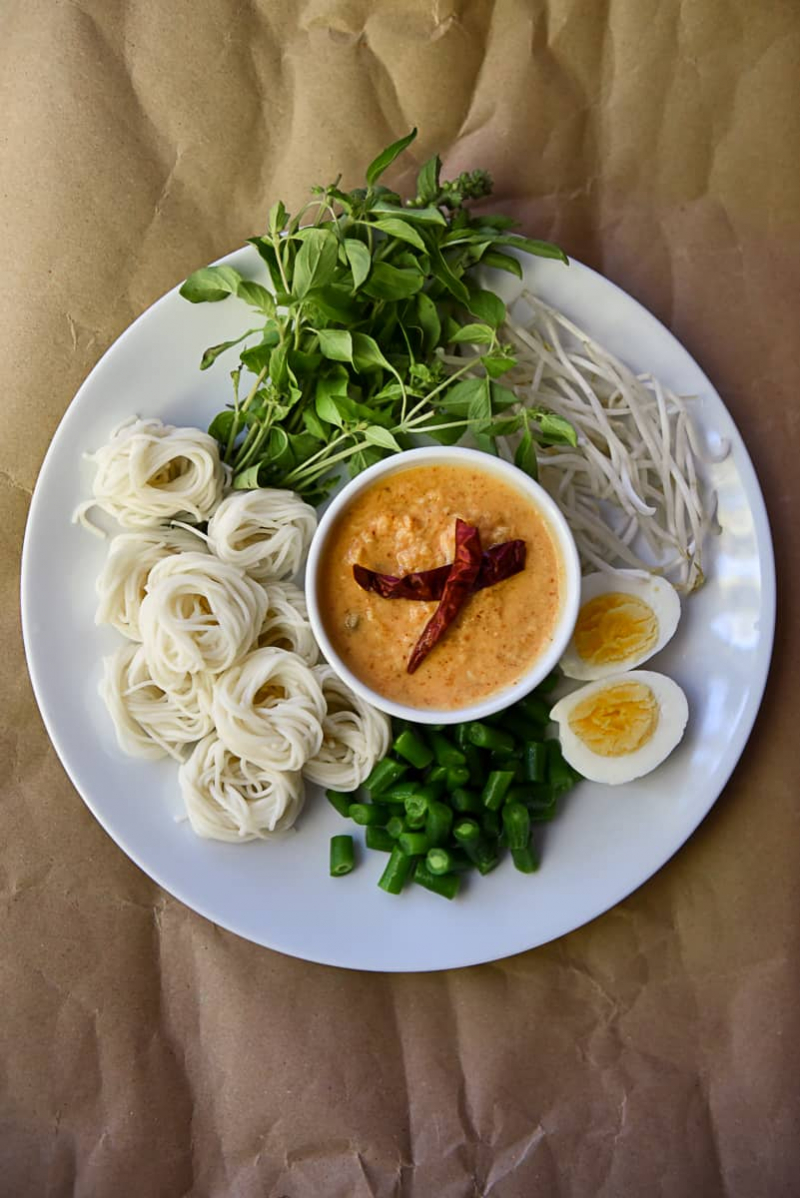
rachelcooksthai.com 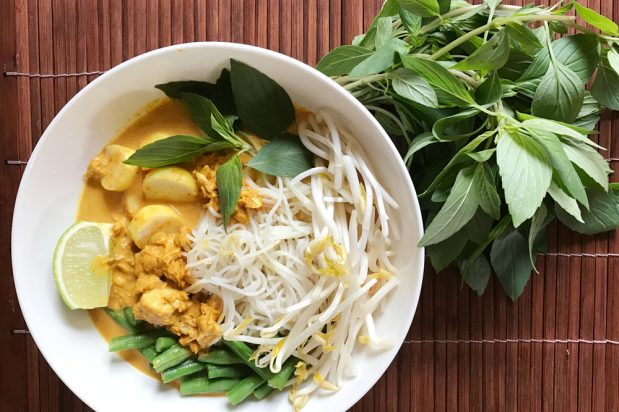
asianinspirations.com.au -
If you're looking for a sweet treat that is both crispy and delicate, then look no further than Khanom Buang, a beloved Thai street food that has been a favorite for generations. This delectable dessert is essentially a Thai-style crepe that is filled with creamy coconut and an array of delicious, sweet, or savory fillings.
The preparation of Khanom Buang includes creating a batter using rice flour, mung bean flour, sugar, and eggs. The batter is then cooked on a hot plate, creating a thin and crispy crepe. Once the crepe is partially cooked, the vendor adds a layer of creamy coconut cream, which is the star ingredient of the dessert.
In Thailand, there are two types of toppings: sweet and savory. The savory topping is usually made from cream, and chopped shrimp mixed with pepper and coriander, then stir-fried and seasoned with salt or a blend of sugar and fish sauce. You can also find vendors using shredded coconut as a substitute for shrimp, offering a vegetarian-friendly option.
On the other hand, the sweet version uses boiled egg yolks mixed with syrup, which is known as Foi Thong. This creates a sweet and creamy egg yolk topping that perfectly balances the crispy crepe and cream filling.
Aside from being a delicious treat, Khanom Buang is also an excellent representation of Thai culinary heritage. It is a snack that you can find just about anywhere in Thailand, being cooked on street corners by local vendors.

asianinspirations.com.au 
foodieadvice.com -
Kao Niew Mamuang, also known as Mango Sticky Rice, is unquestionably one of Thailand's most beloved and popular desserts, making it an essential part of any Thai street food adventure. This delightful dessert combines the luscious sweetness of ripe mangoes with the unique texture and flavor of sticky rice, creating a heavenly treat that is loved by locals and visitors alike.
The history of Kao Niew Mamuang can be traced back to the culinary traditions of Southeast Asia and South Asia. It has become a staple dessert in various countries, including Thailand, Cambodia, Laos, the Philippines, and Malaysia. Each region puts its spin on the dish, resulting in slight variations in preparation and presentation.
The dessert typically consists of glutinous or sticky rice that is cooked until soft and chewy. The rice is then mingled with coconut milk, which adds a rich and creamy element. The addition of sugar or palm sugar brings a delightful sweetness to the rice, making it the perfect complement to the tangy and fragrant mango slices.
The mangoes used in Kao Niew Mamuang are a crucial component of the dish. Thai mangoes, known for their distinctive flavor and tender texture, are the preferred choice. They are carefully selected for their ripeness to ensure a perfect balance of sweetness and juiciness.
When served, Kao Niew Mamuang is often beautifully presented, with the sticky rice forming a mound or a bed on the plate, accompanied by slices of fresh mango artistically arranged on top. To enhance the flavor and presentation, a generous drizzle of sweetened coconut milk is poured over the dish, creating a creamy and aromatic sauce.
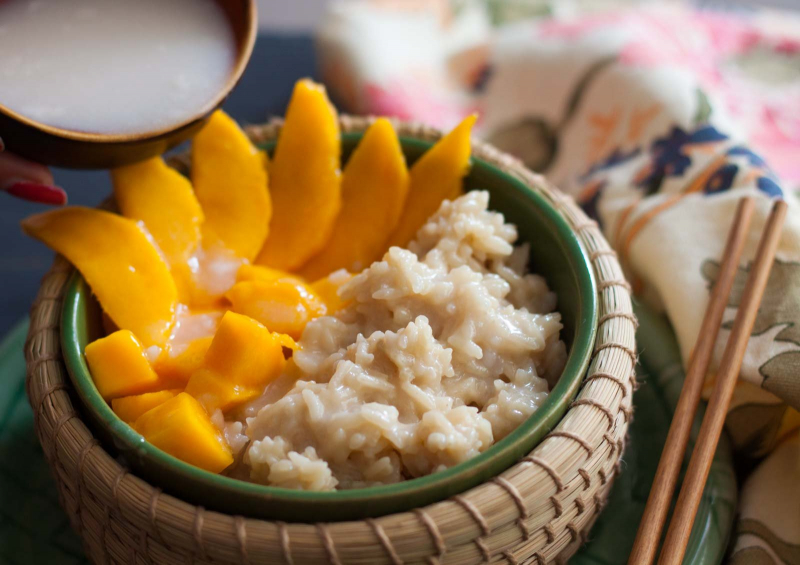
archanaskitchen.com 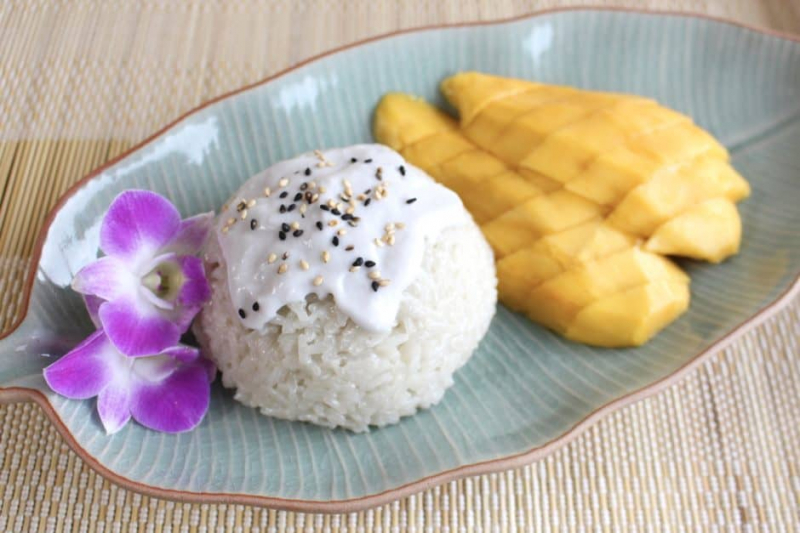
aimadeitforyou.com













